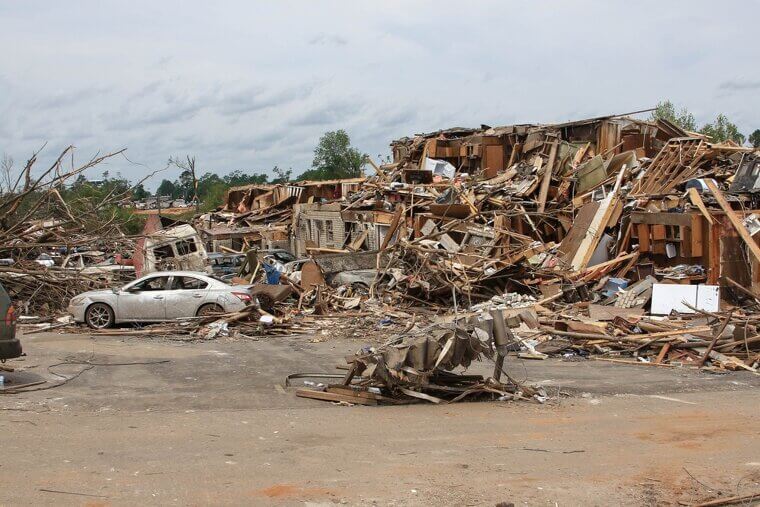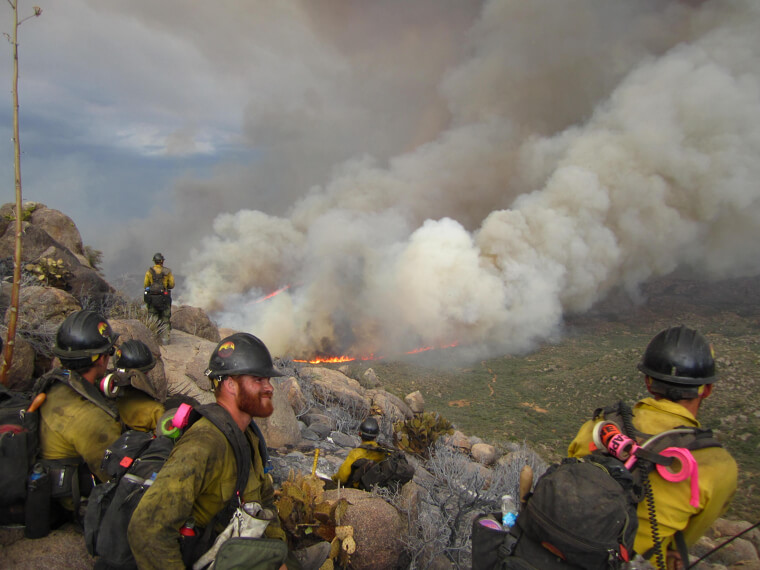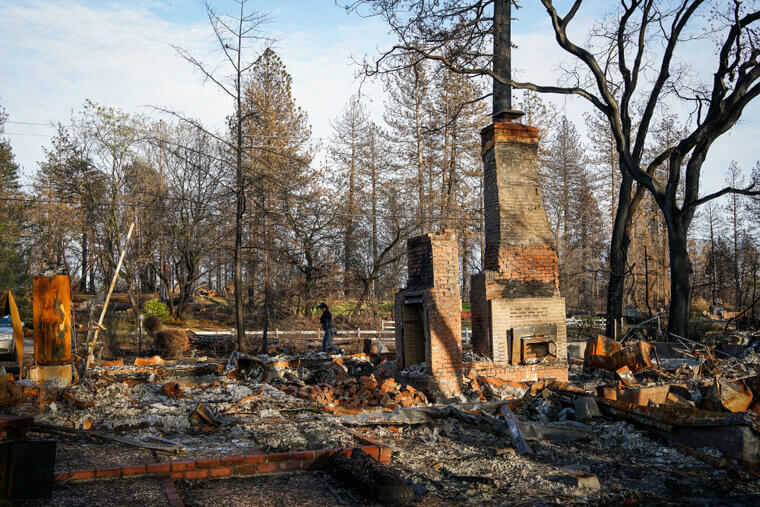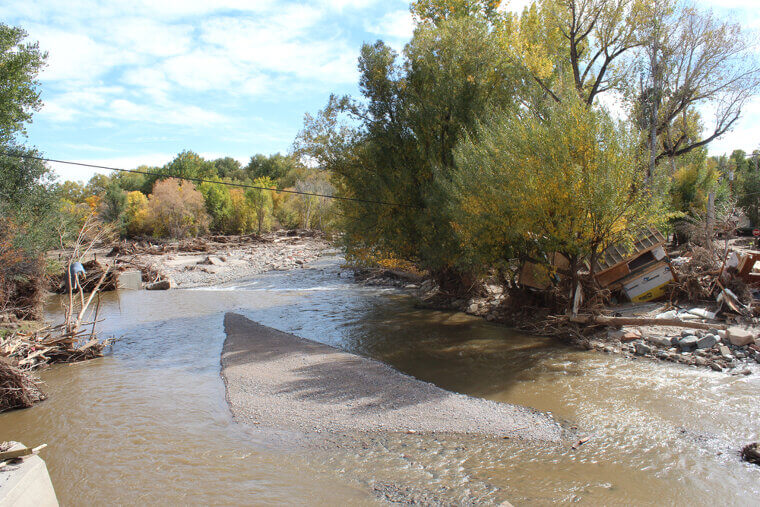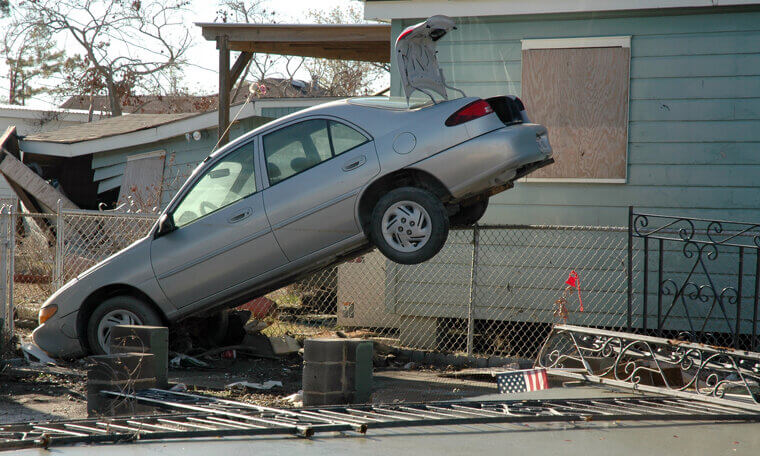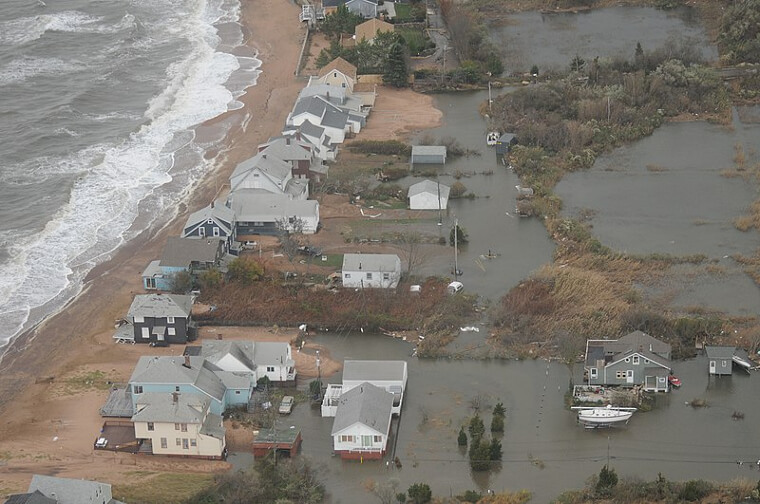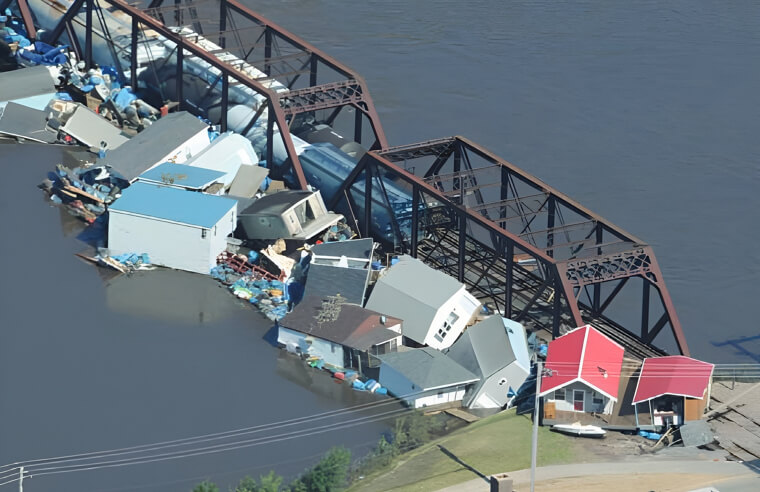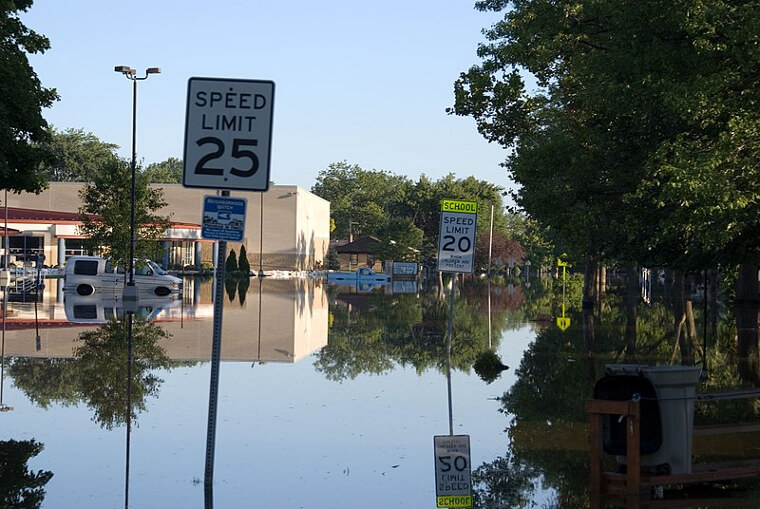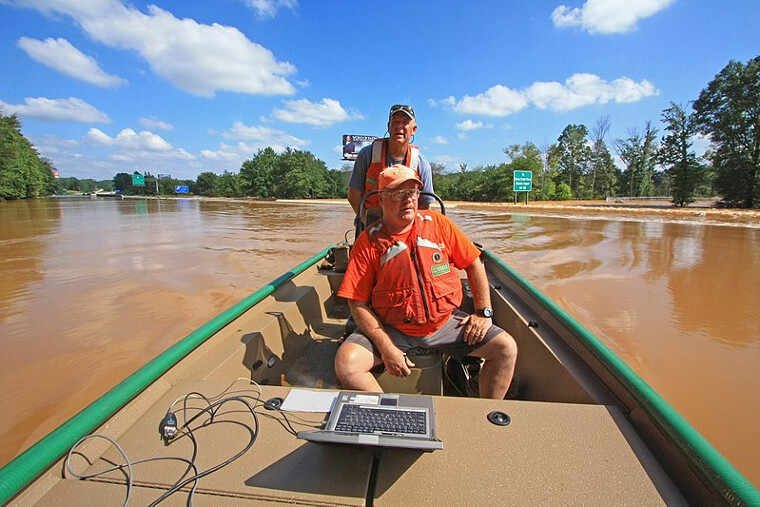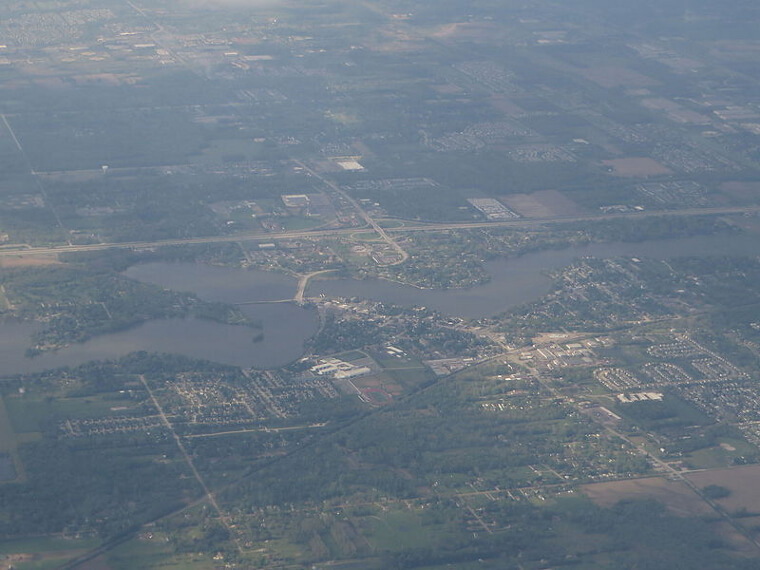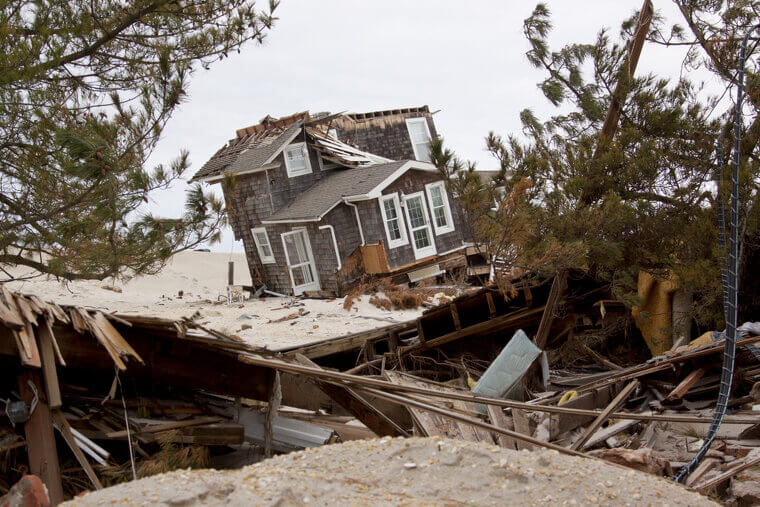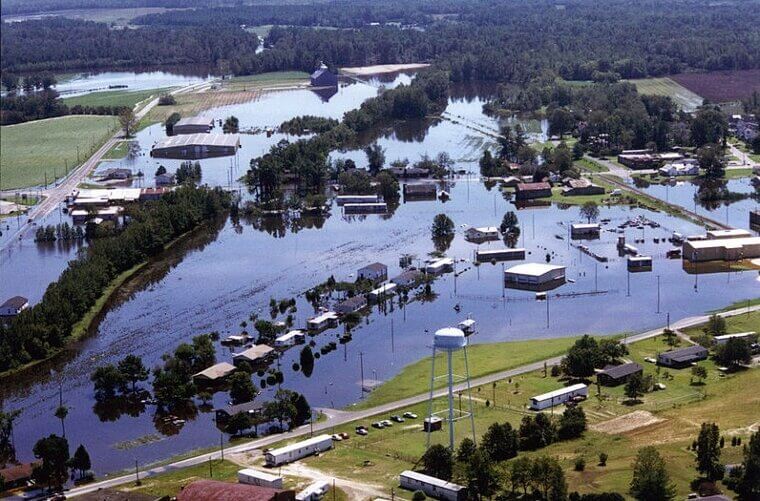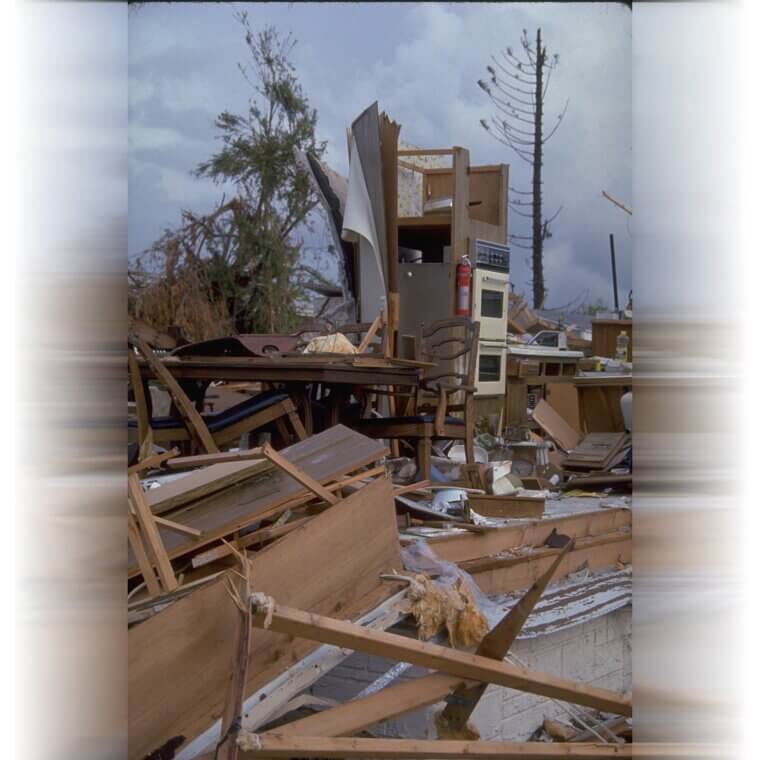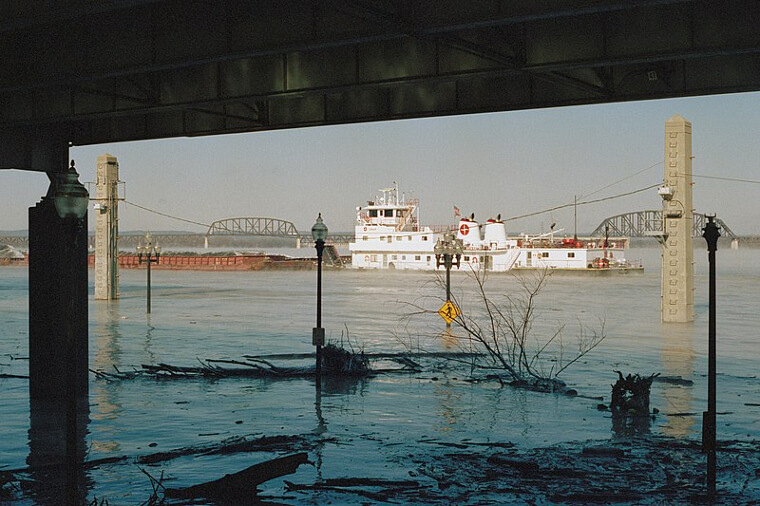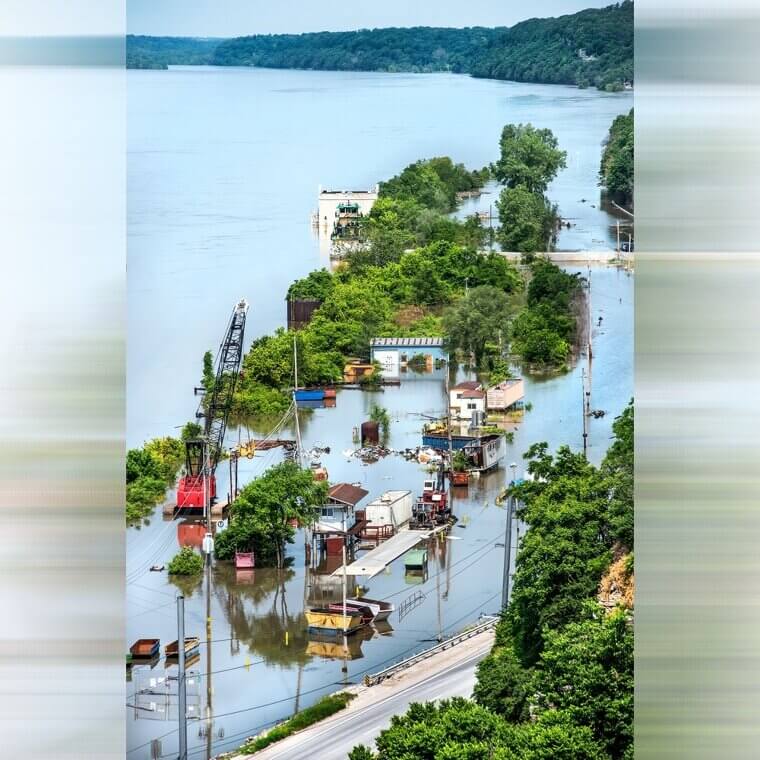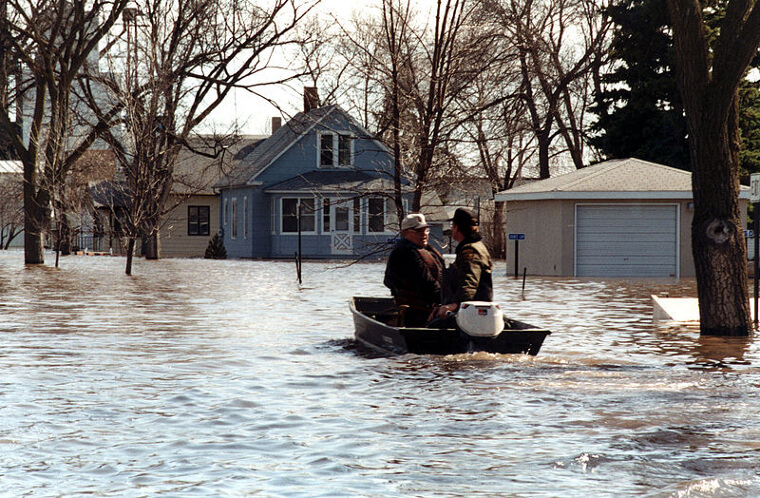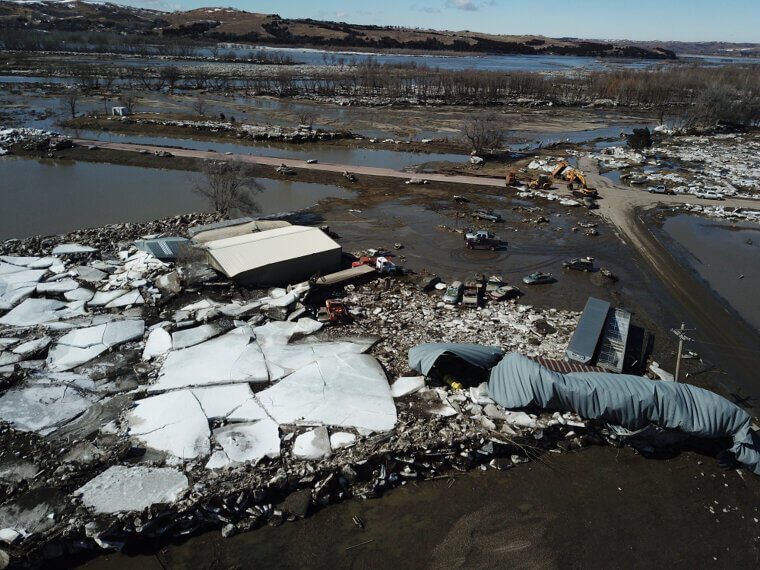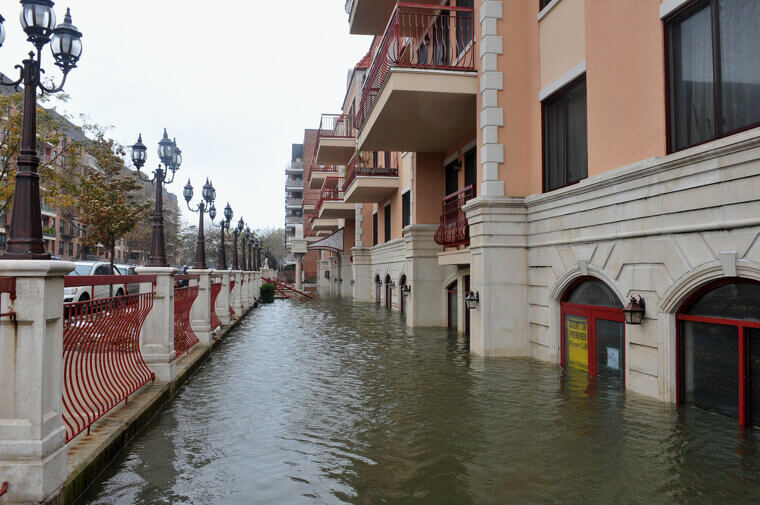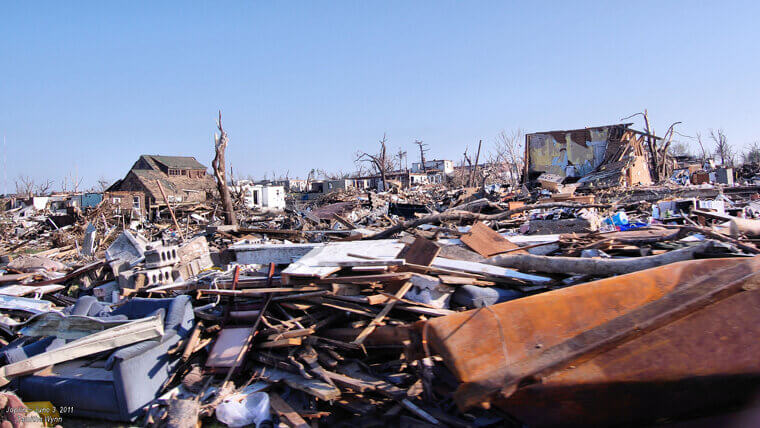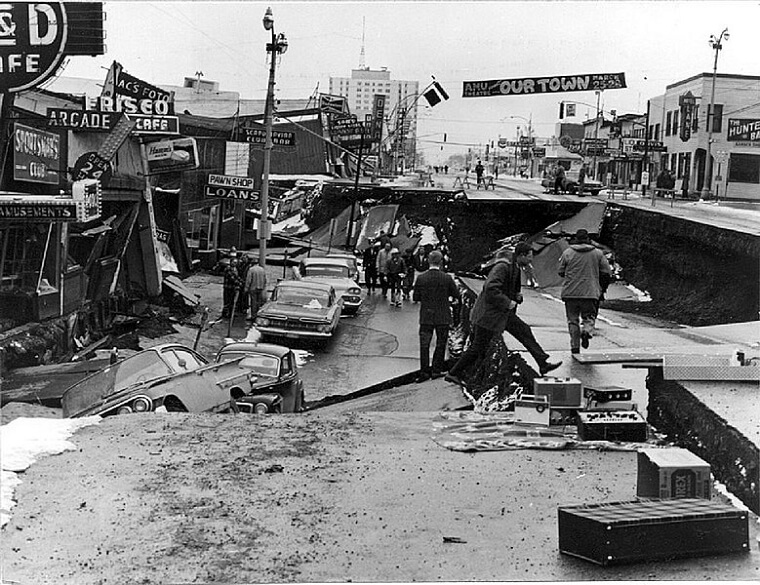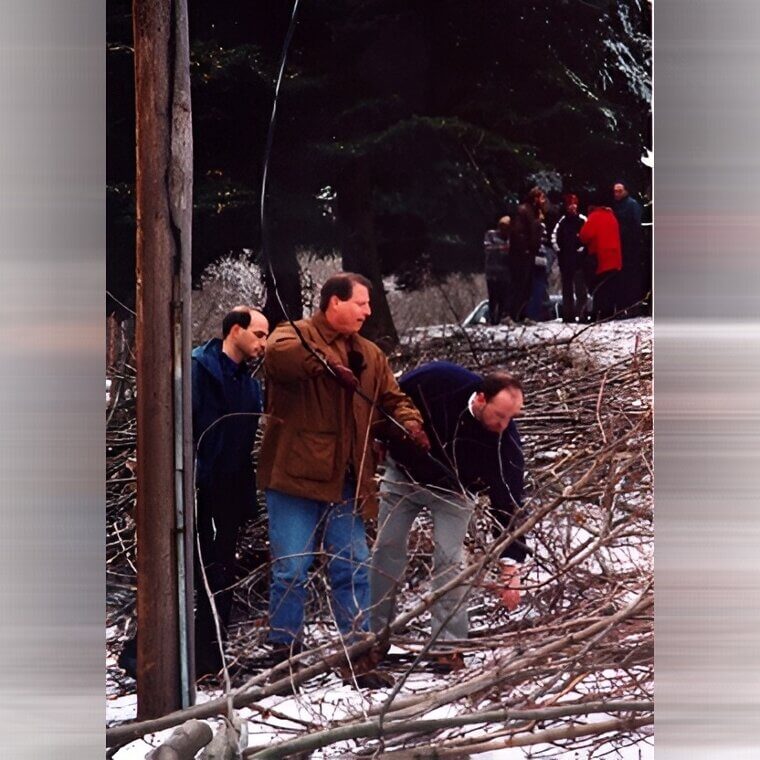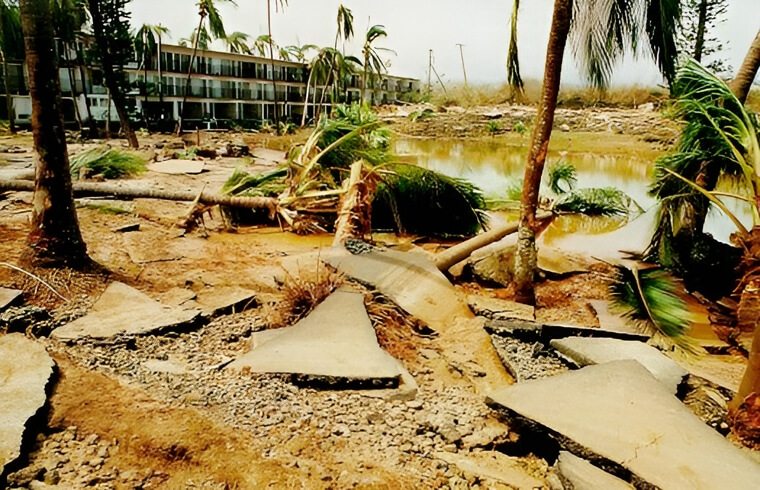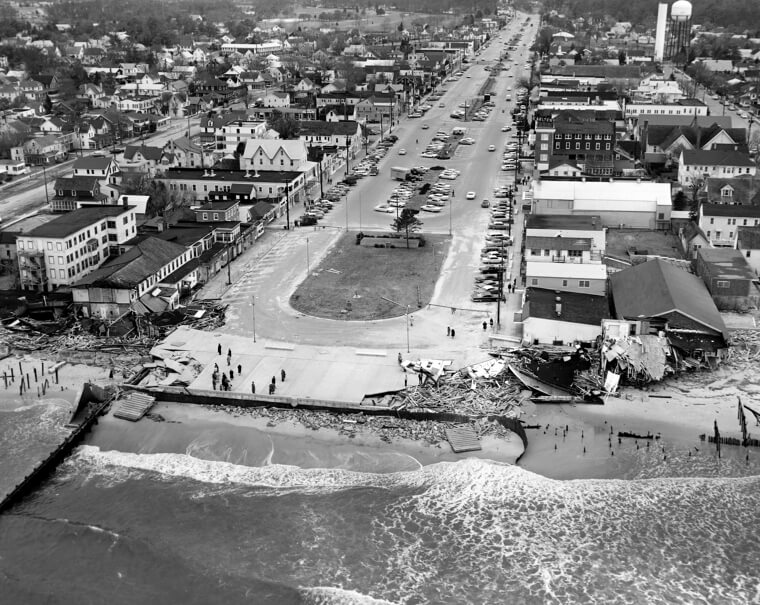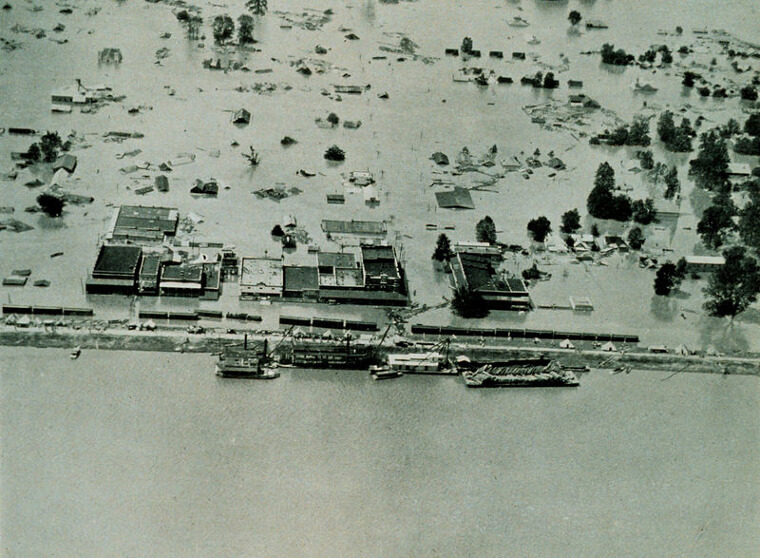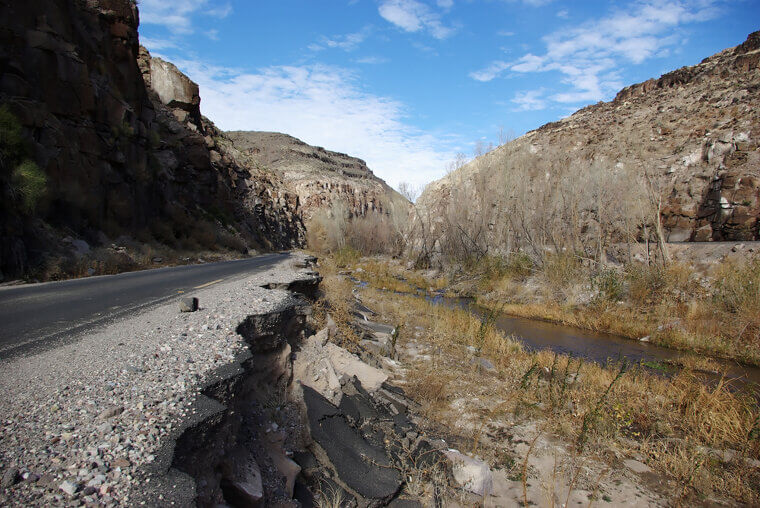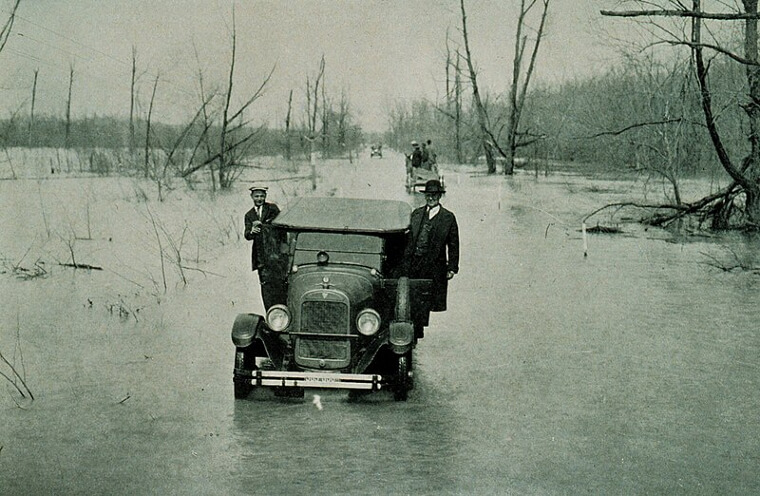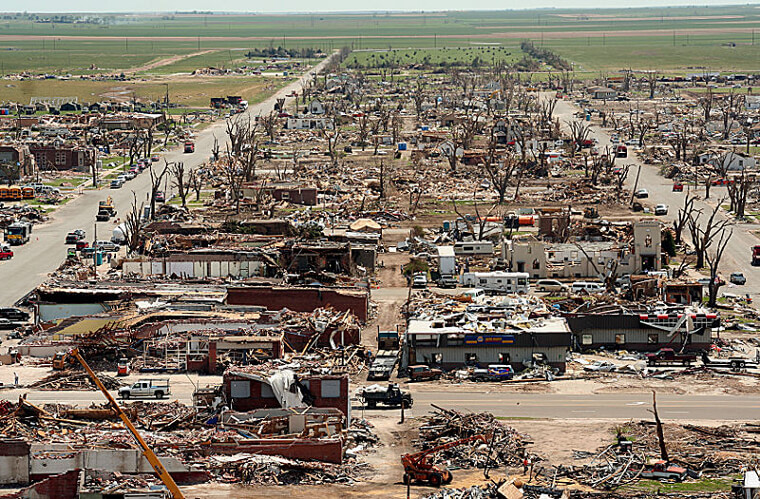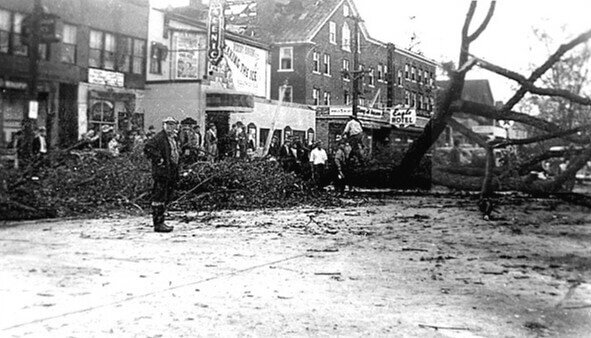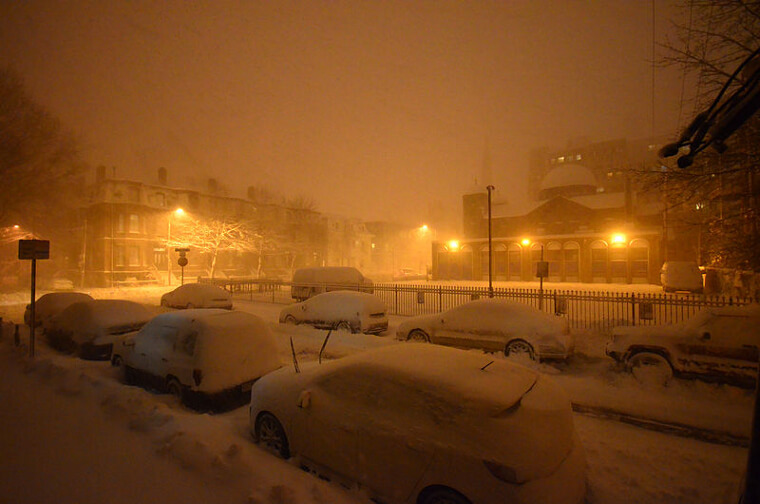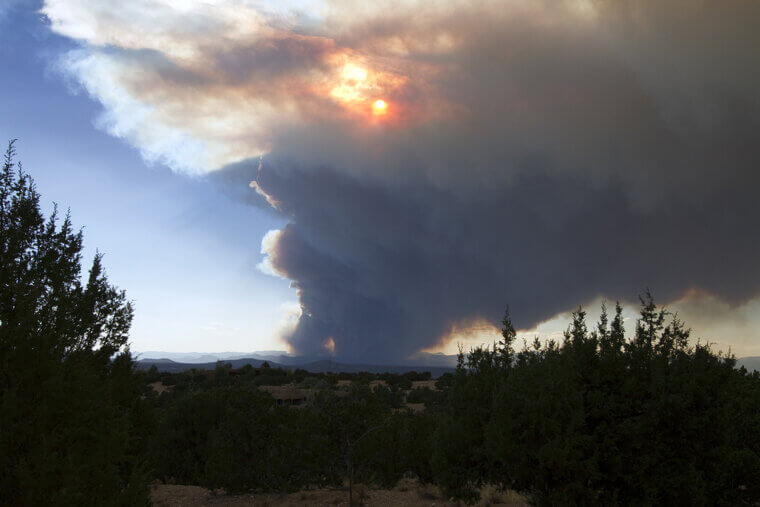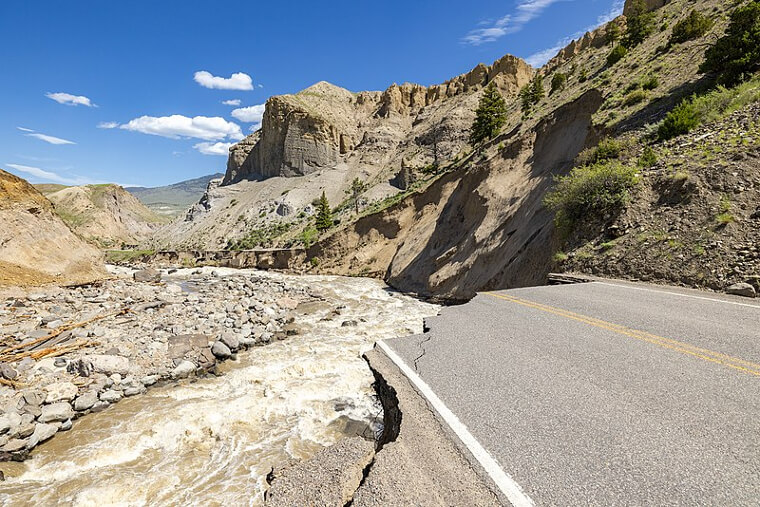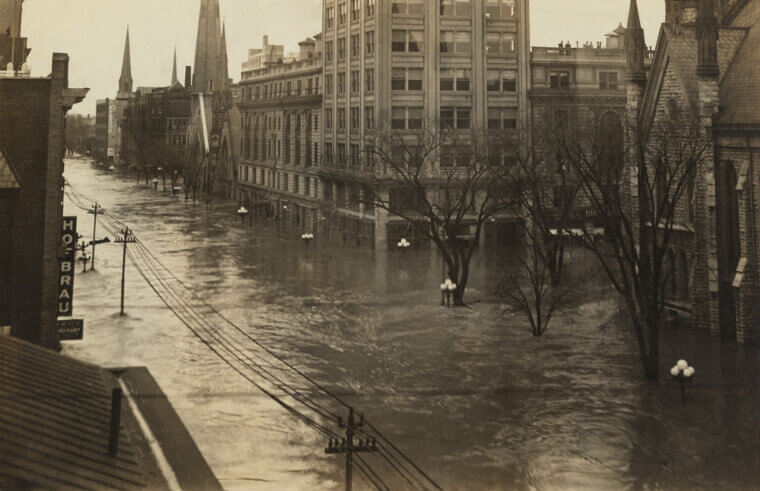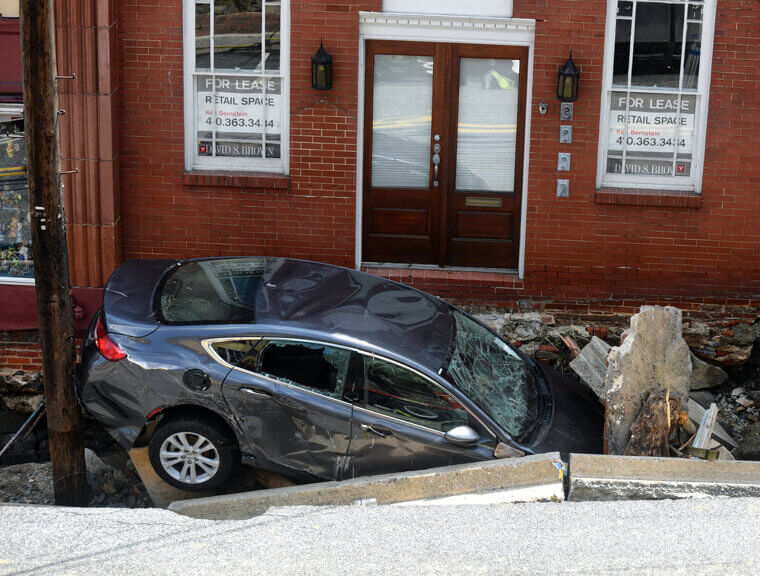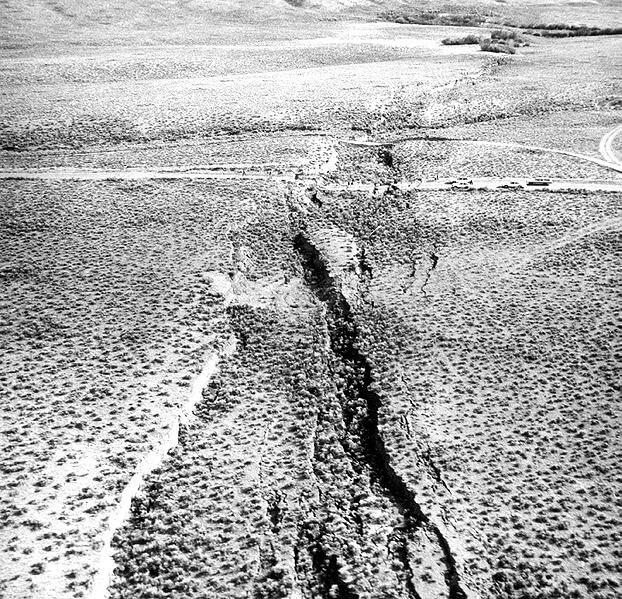Alabama – 2011 Tornado Super Outbreak – Cost: $10.2 Billion
In April 2011, Alabama found itself at the heart of one of the most devastating tornado outbreaks in U.S. history. Over 60 twisters tore through the state in a single day, including an EF4 that ravaged Tuscaloosa and an EF5 that flattened parts of north Alabama. Entire neighborhoods were reduced to rubble, infrastructure was crippled, and over 250 lives were lost. The financial toll reached $10.2 billion, with thousands of homes, businesses, and schools needing reconstruction.
Recovery efforts took years, with federal and state aid helping rebuild communities. The outbreak remains a sobering reminder of the power of nature and the resilience of Alabamians in its aftermath.
Arizona – 2013 Yarnell Hill Wildfire – Cost: $453 Million
The 2013 Yarnell Hill Wildfire was one of the most devastating wildfires in Arizona’s history, both in terms of destruction and tragedy. Sparked by lightning on June 28, the fire quickly spread due to dry conditions and intense winds, ultimately scorching over 8,400 acres and destroying nearly 130 homes. The blaze cost $453 million in damages, but its most heartbreaking toll was the loss of 19 Granite Mountain Hotshots, an elite firefighting crew caught in a sudden firestorm.
Their sacrifice remains one of the worst firefighter tragedies in U.S. history. In the aftermath, stronger fire mitigation policies and memorial efforts were established to honor their bravery.
California – 2018 Camp Fire – Cost: $16.5 Billion
The 2018 Camp Fire was the deadliest and most destructive wildfire in California history, leaving behind a staggering $16.5 billion in damages. Sparked by faulty electrical lines in Butte County, the fire spread rapidly due to dry conditions and strong winds, consuming nearly 240 square miles. The town of Paradise was almost entirely destroyed, with over 18,800 structures reduced to ash. Tragically, 85 lives were lost, and thousands were displaced.
Recovery efforts took years, with insurance claims and lawsuits against PG&E playing a major role in financial settlements. The disaster led to stronger wildfire prevention measures, including power shutoffs and forest management reforms to reduce future fire risks.
Colorado – 2013 Front Range Floods – Cost: $4.3 Billion
The 2013 Front Range Floods were among the most destructive natural disasters in Colorado history, causing $4.3 billion in damage. Over a week of relentless rainfall—nearly a year’s worth in some areas—led to catastrophic flooding across Boulder, Lyons, Longmont, and surrounding communities. Roads, bridges, and entire neighborhoods were washed away, displacing thousands and killing at least eight people. More than 1,800 homes were destroyed, and key infrastructure, including highways and water systems, suffered massive damage.
Recovery took years, with federal and state aid helping to rebuild. The disaster led to improved flood mitigation strategies, including better emergency response plans and infrastructure improvements to withstand future flooding.
Louisiana – 2005 Hurricane Katrina – Cost: $172 Billion
Hurricane Katrina remains the most costly and catastrophic natural disaster in U.S. history, causing an estimated $172 billion in damages when it struck Louisiana on August 29, 2005. The Category 5 storm weakened slightly before landfall but still brought devastating storm surges that overwhelmed New Orleans' levee system, flooding 80% of the city. Entire neighborhoods, including the Lower Ninth Ward, were submerged for weeks, displacing over a million residents. The storm destroyed homes, businesses, and critical infrastructure while tragically claiming more than 1,800 lives.
The disaster exposed flaws in emergency response systems, leading to major reforms in federal disaster management and improved flood protection measures for Louisiana.
Connecticut – 2012 Hurricane Sandy – Cost: $360 Million
Hurricane Sandy hit Connecticut in October 2012, leaving behind $360 million in damages as it battered the state with powerful winds, heavy rain, and a devastating storm surge. Coastal communities, including Bridgeport, Fairfield, and New Haven, suffered extensive flooding, with thousands of homes and businesses damaged or destroyed. The storm knocked out power to over 600,000 residents, leaving many in the dark for days. Infrastructure, including roads, rail lines, and seawalls, took a major hit, slowing recovery efforts.
In the aftermath, Connecticut invested in stronger coastal protections and emergency preparedness measures to reduce future storm impacts, reinforcing the state’s resilience against extreme weather events.
Iowa – 2008 Cedar Rapids Floods – Cost: $10 Billion
The 2008 Cedar Rapids floods were among the most devastating natural disasters in Iowa history, causing $10 billion in damages. In June, relentless rainfall and rising river levels led to catastrophic flooding across the state, with Cedar Rapids experiencing the worst impact. The Cedar River crested at a record-breaking 31.12 feet, submerging much of downtown and destroying thousands of homes and businesses. Critical infrastructure, including government buildings, hospitals, and bridges, suffered severe damage.
Over 18,000 residents were displaced, and economic losses mounted, particularly in agriculture and manufacturing. The disaster prompted major flood prevention projects, including improved levees and floodwalls, to protect against future flooding events.
Indiana – 2008 Midwest Floods – Cost: $2 Billion
The 2008 Midwest Floods brought widespread devastation to Indiana, causing $2 billion in damages and ranking among the state’s worst natural disasters. Torrential rainfall in early June overwhelmed rivers, reservoirs, and drainage systems, leading to catastrophic flooding across central and southern Indiana. Cities like Columbus, Bloomington, and Martinsville saw entire neighborhoods submerged, while critical infrastructure, including roads, bridges, and hospitals, suffered severe damage. Thousands of homes and businesses were destroyed, and agricultural losses mounted as floodwaters drowned vast farmlands.
Recovery efforts took years, with federal aid assisting in rebuilding. The disaster led to improved flood control measures and emergency response strategies to reduce future flood risks.
Georgia – 2009 Atlanta Floods – Cost: $500 Million
The 2009 Atlanta floods were among the most devastating in Georgia’s history, causing $500 million in damages and leaving much of the metro area underwater. Days of torrential rain—up to 20 inches in some areas—overwhelmed rivers and creeks, leading to catastrophic flash flooding. Entire neighborhoods were submerged, with thousands of homes and businesses suffering severe water damage. Major highways, including portions of I-20 and I-285, were shut down, and infrastructure, including bridges and drainage systems, was badly damaged.
Ten people lost their lives in the disaster. The floods prompted improvements in stormwater management and emergency response planning to help prevent future large-scale flooding events.
Michigan – 2014 Detroit Floods – Cost: $1.8 Billion
The 2014 Detroit floods were one of Michigan’s most costly natural disasters, causing $1.8 billion in damages and paralyzing the metro area. On August 11, a record-breaking rainstorm dumped over six inches of rain in just a few hours, overwhelming drainage systems and flooding highways, homes, and businesses. Thousands of vehicles were stranded in deep water, while basements across the city were inundated with sewage and storm runoff. The widespread damage disrupted transportation, commerce, and daily life for weeks.
In response, Michigan invested in improving stormwater infrastructure and emergency response systems to better handle extreme rainfall events and prevent future large-scale flooding.
New Jersey – 2012 Hurricane Sandy – Cost: $30 Billion
Hurricane Sandy was one of the most devastating storms to ever hit New Jersey, causing $30 billion in damages when it made landfall on October 29, 2012. The massive storm brought record-breaking storm surges, with waves flooding coastal towns like Atlantic City, Seaside Heights, and Hoboken. Thousands of homes and businesses were destroyed, and entire boardwalks were washed away. Over two million residents lost power, some for weeks, while transportation networks and critical infrastructure suffered severe damage.
Recovery took years, with billions invested in rebuilding efforts, stronger flood protections, and storm-resistant infrastructure to help protect New Jersey from future hurricanes and extreme weather events.
North Carolina – 1999 Hurricane Floyd – Cost: $6.9 Billion
Hurricane Floyd struck North Carolina on September 16, 1999, bringing catastrophic flooding and causing $6.9 billion in damages. After days of heavy rain from a previous storm, Floyd dumped even more rainfall, overwhelming rivers and causing widespread flooding across the state. Entire towns, including Tarboro and Rocky Mount, were submerged, and thousands of homes and businesses were destroyed. The storm also caused a massive agricultural disaster, with livestock drowning and crops ruined.
Over 50 people lost their lives, many due to flooding. In response, North Carolina strengthened its flood mitigation efforts, improving levees, drainage systems, and emergency response plans to better handle future hurricanes.
Florida – 1992 Hurricane Andrew – Cost: $54 Billion (adjusted for Inflation)
Hurricane Andrew slammed into South Florida on August 24, 1992, as a Category 5 storm, leaving behind an estimated $54 billion in damages when adjusted for inflation. With winds exceeding 165 mph, Andrew flattened entire neighborhoods in Homestead, Miami-Dade County, and surrounding areas. Over 63,000 homes were destroyed, and more than 175,000 others were severely damaged. The storm displaced hundreds of thousands of residents, while businesses, schools, and infrastructure suffered catastrophic losses.
Recovery took years, and the disaster led to significant changes in Florida’s building codes, requiring stronger hurricane-resistant construction. Andrew remains one of the most expensive and impactful hurricanes in U.S. history.
Kentucky – 2021 Eastern Kentucky Floods – Cost: $400 Million
The 2021 Eastern Kentucky floods caused widespread devastation, resulting in $400 million in damages across multiple counties. Torrential rains in late February led to rivers overflowing, submerging homes, businesses, and roads in communities like Beattyville, Jackson, and Booneville. Flash floods swept through valleys, forcing hundreds of residents to evacuate as water levels rose rapidly. Infrastructure suffered severe damage, with bridges, highways, and utilities left in disrepair. The disaster was especially hard on rural areas, where recovery was slow due to limited resources.
In response, Kentucky invested in improved flood mitigation strategies, including better drainage systems and emergency preparedness measures to help protect vulnerable communities in the future.
Illinois – 1993 Mississippi River Floods – Cost: $15 Billion
The 1993 Mississippi River Floods were among the most costly and prolonged natural disasters in U.S. history, causing $15 billion in damages across multiple states, including Illinois. Torrential rains throughout the spring and summer led to record-breaking water levels along the Mississippi River, overwhelming levees and submerging vast portions of farmland, towns, and infrastructure. In Illinois, entire communities were forced to evacuate as floodwaters destroyed homes, businesses, and transportation networks.
The disaster disrupted agriculture, with thousands of acres of crops lost. Recovery efforts took years, prompting significant investments in flood control, levee reinforcement, and improved disaster preparedness to mitigate future flooding along the Mississippi River.
Minnesota – 1997 Red River Flood – Cost: $3.5 Billion
The 1997 Red River Flood was one of the most devastating disasters in Minnesota’s history, causing $3.5 billion in damages. After a harsh winter with heavy snowfall, rapid spring melting and intense rainfall caused the Red River to overflow, inundating cities like East Grand Forks. Entire neighborhoods were submerged, forcing tens of thousands of residents to evacuate. Fires, ignited by gas leaks, broke out in flooded areas, further worsening the destruction.
The disaster led to a massive rebuilding effort and the construction of permanent flood barriers. In the aftermath, Minnesota and neighboring states invested in enhanced flood control systems to prevent future large-scale flooding.
Nebraska – 2019 Midwest Floods – Cost: $2.9 Billion
The 2019 Midwest floods were among the most devastating in Nebraska’s history, causing $2.9 billion in damages and widespread destruction across the state. In March, a combination of heavy rain, rapid snowmelt, and a "bomb cyclone" storm led to catastrophic flooding, breaching levees and submerging entire towns. Communities like Fremont, Norfolk, and Bellevue saw homes, farms, and businesses destroyed, while Offutt Air Force Base suffered extensive damage. Thousands of cattle perished, and agricultural losses were staggering.
Recovery efforts took years, with federal aid helping to rebuild infrastructure and assist displaced residents. The disaster highlighted the need for stronger flood defenses and improved emergency preparedness.
New York – 2012 Hurricane Sandy – Cost: $42 Billion
Hurricane Sandy was the most destructive storm in New York’s history, causing $42 billion in damages when it struck on October 29, 2012. The massive storm surge flooded large parts of New York City, including lower Manhattan, the subway system, and tunnels, bringing the city to a standstill. Staten Island, the Rockaways, and Long Island suffered extensive home and business destruction, while power outages left millions in the dark for days. Coastal erosion and infrastructure damage were widespread, with major disruptions to transportation and emergency services.
In the aftermath, New York invested in stronger flood defenses, storm-resistant infrastructure, and emergency preparedness measures to mitigate future disasters.
Missouri – 2011 Joplin Tornado – Cost: $2.8 Billion
The 2011 Joplin tornado was one of the deadliest and most destructive tornadoes in U.S. history, causing $2.8 billion in damages. On May 22, an EF5 tornado tore through Joplin, Missouri, with winds exceeding 200 mph, leveling entire neighborhoods and cutting a mile-wide path of destruction through the city. Over 7,500 homes and businesses were destroyed, St. John’s Regional Medical Center suffered catastrophic damage, and 161 people lost their lives.
The recovery process took years, with federal and state aid helping to rebuild. The disaster led to major improvements in tornado preparedness, including stricter building codes and better early warning systems to protect communities in the future.
Alaska – 1964 Great Alaska Earthquake and Tsunami – Cost: $2.3 Billion (adjusted for Inflation)
On March 27, 1964, Alaska was rocked by the most powerful earthquake in U.S. history—a staggering 9.2-magnitude quake that lasted over four minutes. The tremor triggered massive tsunamis, landslides, and soil liquefaction, devastating coastal communities like Anchorage, Valdez, and Seward. The combined destruction caused an estimated $2.3 billion in damages (adjusted for inflation), wiping out homes, ports, and businesses. Entire towns were relocated, and critical infrastructure, including roads and bridges, had to be rebuilt from the ground up.
Despite the immense destruction, the disaster led to improved seismic research and warning systems, helping Alaska and the Pacific Coast better prepare for future earthquakes and tsunamis.
Maine – 1998 Ice Storm – Cost: $1.4 Billion
The 1998 ice storm was one of the worst natural disasters in Maine’s history, causing $1.4 billion in damages and leaving a lasting impact on the state. Over several days in early January, freezing rain coated trees, power lines, and roads with several inches of ice, leading to widespread devastation. More than half of Maine’s population lost power, with some residents enduring outages for weeks in freezing temperatures. Countless trees collapsed under the weight of the ice, blocking roads and damaging homes.
The disaster prompted major improvements in the state’s power grid resilience and emergency preparedness to better withstand future severe winter storms.
Hawaii – 1992 Hurricane Iniki – Cost: $3.1 Billion (adjusted for Inflation)
Hurricane Iniki struck Hawaii on September 11, 1992, as a powerful Category 4 storm, causing $3.1 billion in damages when adjusted for inflation. Packing winds of up to 145 mph, Iniki made direct landfall on Kauai, leaving a trail of destruction across the island. Nearly 14,000 homes were damaged or destroyed, and widespread power outages left residents without electricity for weeks. Crops, businesses, and infrastructure took a major hit, with the tourism industry suffering long-term setbacks.
The hurricane remains the strongest to ever hit Hawaii, prompting stronger building codes and emergency preparedness measures to better protect the islands from future storms.
Delaware – 1962 Ash Wednesday Storm – Cost: $1.5 Billion (adjusted for Inflation)
The 1962 Ash Wednesday Storm was one of the most destructive nor’easters to ever hit Delaware, causing an estimated $1.5 billion in damages when adjusted for inflation. Over the course of three relentless days, powerful winds, heavy rain, and record-breaking storm surges battered the state’s coastline. Beaches were eroded, boardwalks were torn apart, and entire homes were swept into the ocean. Rehoboth Beach, Bethany Beach, and Fenwick Island saw widespread destruction, with roads and infrastructure severely damaged.
The slow-moving storm reshaped Delaware’s shoreline and led to major improvements in coastal management, including stronger building codes and dune restoration efforts to better protect against future storms.
Arkansas – 1927 Great Mississippi Flood – Cost: $1 Billion (adjusted for Inflation)
The 1927 Great Mississippi Flood remains one of the most devastating natural disasters in Arkansas history. Torrential rains caused the Mississippi River to swell beyond its banks, breaking levees and submerging vast portions of the state. Over 14% of Arkansas was underwater, with some areas submerged for months. Entire towns were washed away, and more than 200,000 residents were displaced, many forced into overcrowded refugee camps. The financial toll reached an estimated $1 billion (adjusted for inflation), as farmlands, homes, and infrastructure were destroyed.
The disaster led to major changes in U.S. flood control policies, including the construction of stronger levees and flood management systems to prevent future catastrophes.
Nevada – 1997 New Year’s Flood – Cost: $700 Million
The 1997 New Year’s Flood was one of the most destructive natural disasters in Nevada’s history, causing $700 million in damages. A series of warm Pacific storms dumped heavy rain on the Sierra Nevada, rapidly melting mountain snow and overwhelming rivers and reservoirs. The Truckee and Carson Rivers overflowed, flooding Reno, Sparks, and surrounding areas. Roads, bridges, and rail lines were washed out, while homes and businesses suffered severe water damage.
The Reno-Tahoe Airport was temporarily shut down, and economic losses mounted across northern Nevada. In response, flood control projects were expanded, including improved levees and stormwater management systems to prevent future large-scale flooding.
Mississippi – 1927 Great Mississippi Flood – Cost: $1 Billion (adjusted for Inflation)
The 1927 Great Mississippi Flood was one of the most devastating natural disasters in Mississippi’s history, causing an estimated $1 billion in damages when adjusted for inflation. Weeks of relentless rain caused the Mississippi River to swell beyond its banks, breaching levees and submerging vast portions of the state. Thousands of homes, farms, and businesses were washed away, leaving more than 300,000 Mississippians displaced, many of whom were African American sharecroppers forced into overcrowded relief camps.
The flood crippled the region’s economy, particularly agriculture, and exposed racial inequalities in disaster relief efforts. In response, the federal government enacted major flood control projects, including levee expansions and improved river management.
Kansas – 2007 Greensburg Tornado – Cost: $250 Million
The 2007 Greensburg tornado was one of the most powerful and destructive tornadoes in Kansas history, causing $250 million in damages. On May 4, an EF5 tornado with winds exceeding 200 mph tore through the small town of Greensburg, leveling 95% of the community. Homes, businesses, and schools were completely destroyed, and 11 people lost their lives. The devastation was so severe that rebuilding efforts took years, but the town seized the opportunity to become a model for sustainability.
Greensburg was rebuilt as one of the greenest communities in the U.S., incorporating energy-efficient buildings and renewable energy sources, turning tragedy into innovation and resilience.
New Hampshire – 1938 New England Hurricane – Cost: $6.3 Billion (adjusted for Inflation)
The 1938 New England Hurricane was one of the most destructive storms to ever hit New Hampshire, causing an estimated $6.3 billion in damages when adjusted for inflation. Striking without modern warning systems, the Category 3 hurricane brought powerful winds exceeding 100 mph and torrential rain, toppling thousands of trees and cutting off entire communities. Rivers overflowed, flooding towns like Keene and Concord, while the storm surge battered the Seacoast, destroying homes and infrastructure.
The hurricane also devastated the state’s forests, with millions of trees lost in the White Mountains. In its aftermath, New Hampshire improved disaster preparedness and reforestation efforts to recover from the widespread destruction.
Massachusetts – 2015 Blizzard Juno – Cost: $500 Million
Blizzard Juno slammed into Massachusetts in January 2015, bringing heavy snowfall, hurricane-force winds, and coastal flooding, causing an estimated $500 million in damages. Some areas, including Worcester and the Boston suburbs, saw over 30 inches of snow, shutting down roads, businesses, and public transportation. The storm's powerful winds knocked out power to more than 100,000 residents, while severe coastal erosion battered communities along Cape Cod and the South Shore. Travel bans were enforced, and Logan Airport canceled hundreds of flights.
The blizzard reinforced the need for improved winter storm preparedness, leading to enhanced emergency response measures and better snow removal strategies across the state.
New Mexico – 2011 Las Conchas Fire – Cost: $250 Million
The 2011 Las Conchas Fire was one of the largest and most destructive wildfires in New Mexico’s history, causing $250 million in damages. Sparked by a downed power line on June 26, the fire rapidly spread across the Jemez Mountains, scorching over 156,000 acres. The blaze threatened Los Alamos National Laboratory, forcing mass evacuations and raising concerns over hazardous material exposure. Hundreds of homes and structures were destroyed, while vast forested areas suffered severe ecological damage.
The fire also led to long-term flooding and erosion issues due to the loss of vegetation. In response, New Mexico invested in improved wildfire prevention, forest management, and emergency response strategies.
Montana – 2022 Yellowstone Flooding – Cost: $100 Million
The 2022 Yellowstone flooding was one of the most severe natural disasters in Montana’s history, causing $100 million in damages and reshaping the landscape of Yellowstone National Park and surrounding communities. In June, unprecedented rainfall combined with rapid snowmelt triggered massive flooding, washing out roads, bridges, and homes in towns like Gardiner, Red Lodge, and Cooke City. The raging waters forced the closure of Yellowstone’s northern entrance for months, severely impacting tourism and local businesses.
Recovery efforts focused on rebuilding infrastructure and restoring access to the park. The disaster underscored the need for improved flood management strategies in Montana’s mountainous regions.
Ohio – 1913 Great Dayton Flood – Cost: $100 Million (adjusted for Inflation)
The 1913 Great Dayton Flood was the worst natural disaster in Ohio’s history, causing $100 million in damages when adjusted for inflation. After days of relentless rainfall in late March, the Great Miami River overflowed, submerging much of downtown Dayton under up to 20 feet of water. Entire neighborhoods were washed away, businesses and factories were destroyed, and fires broke out, worsening the devastation. Over 360 people lost their lives, and more than 65,000 were displaced.
In response, Ohio implemented one of the nation’s first large-scale flood control systems, leading to the creation of the Miami Conservancy District, which continues to protect the region today.
Maryland – 2016 Ellicott City Flash Flood – Cost: $22.4 Million
The 2016 Ellicott City flash flood was a sudden and devastating disaster, causing $22.4 million in damages and leaving the historic Maryland town in ruins. On July 30, a torrential downpour dumped over six inches of rain in just two hours, overwhelming drainage systems and turning Main Street into a raging river. Cars were swept away, businesses were destroyed, and tragically, two people lost their lives. The flood severely damaged the town’s historic district, requiring years of recovery efforts.
In response, Maryland implemented improved flood mitigation strategies, including expanded drainage systems and redevelopment plans aimed at making Ellicott City more resilient against future extreme weather events.
Idaho – 1983 Borah Peak Earthquake – Cost: $12.5 Million
The 1983 Borah Peak Earthquake was the strongest recorded earthquake in Idaho’s history, striking on October 28 with a magnitude of 6.9. The quake caused significant damage across central Idaho, particularly in Challis and Mackay, where buildings collapsed, roads cracked, and landslides reshaped the landscape. Two children tragically lost their lives when a storefront façade crumbled in Challis. The total cost of damages reached $12.5 million, impacting homes, businesses, and infrastructure.
The quake also permanently lifted Borah Peak by about a foot, altering the region’s topography. In its aftermath, Idaho strengthened building codes and emergency response systems to better prepare for future seismic activity.

